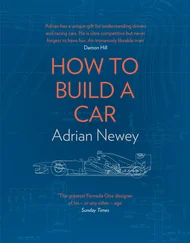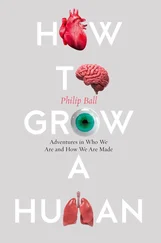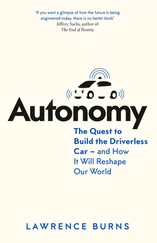Eyal, Nir - Hooked - How to Build Habit-Forming Products
Здесь есть возможность читать онлайн «Eyal, Nir - Hooked - How to Build Habit-Forming Products» весь текст электронной книги совершенно бесплатно (целиком полную версию без сокращений). В некоторых случаях можно слушать аудио, скачать через торрент в формате fb2 и присутствует краткое содержание. Год выпуска: 2014, Издательство: Nir Eyal, Жанр: Старинная литература, на английском языке. Описание произведения, (предисловие) а так же отзывы посетителей доступны на портале библиотеки ЛибКат.
- Название:Hooked: How to Build Habit-Forming Products
- Автор:
- Издательство:Nir Eyal
- Жанр:
- Год:2014
- ISBN:нет данных
- Рейтинг книги:5 / 5. Голосов: 1
-
Избранное:Добавить в избранное
- Отзывы:
-
Ваша оценка:
- 100
- 1
- 2
- 3
- 4
- 5
Hooked: How to Build Habit-Forming Products: краткое содержание, описание и аннотация
Предлагаем к чтению аннотацию, описание, краткое содержание или предисловие (зависит от того, что написал сам автор книги «Hooked: How to Build Habit-Forming Products»). Если вы не нашли необходимую информацию о книге — напишите в комментариях, мы постараемся отыскать её.
Hooked: How to Build Habit-Forming Products — читать онлайн бесплатно полную книгу (весь текст) целиком
Ниже представлен текст книги, разбитый по страницам. Система сохранения места последней прочитанной страницы, позволяет с удобством читать онлайн бесплатно книгу «Hooked: How to Build Habit-Forming Products», без необходимости каждый раз заново искать на чём Вы остановились. Поставьте закладку, и сможете в любой момент перейти на страницу, на которой закончили чтение.
Интервал:
Закладка:
It is no surprise that social media has exploded in popularity. Facebook, Twitter, Pinterest, and several other sites collectively provide over a billion people with powerful social rewards on a variable schedule. With every post, tweet, or pin, users anticipate social validation. Rewards of the tribe keep users coming back, wanting more.
Sites that leverage tribal rewards benefit from what psychologist Albert Bandura called “social learning theory.” [lxxvi]Bandura studied the power of modeling and ascribed special powers to our ability to learn from others. In particular, Bandura showed that people who observe someone being rewarded for a particular behavior are more likely to alter their own beliefs and subsequent actions. Notably, Bandura also showed that this technique works particularly well when people observe the behavior of people most like themselves, or those who are slightly more experienced (and, therefore, role models). [lxxvii]This is exactly the kind of targeted demographic and interest-level segmentation that social media companies such as Facebook and industry-specific sites such as Stack Overflow selectively apply.
Here are some online examples of rewards of the tribe:
Facebook provides numerous examples of variable social rewards. Logging-in reveals an endless stream of content friends have shared, comments from others, and running tallies of how many people have “liked” something (figure 21). The uncertainty of what users will find each time they visit the site creates the intrigue needed to pull them back again.
While variable content gets users to keep searching for interesting tidbits in their Newsfeeds, a click of the “Like” button provides a variable reward for the content’s creators. “Likes” and comments offer tribal validation for those who shared the content, and provide variable rewards that motivate them to continue posting.

Figure 21
Stack Overflow
Stack Overflow is the world’s largest question-and-answer site for software developers. As with other user-generated content sites such as Quora, Wikipedia, and YouTube, all of Stack Overflow’s content is created voluntarily by people who use the site. A staggering 5,000 answers to questions are generated per day by site members. Many of these responses provide detailed, highly technical and time-consuming answers. But why do so many people spend so much time doing all this work for free? What motivates them to invest the effort into what others may see as the burdensome task of writing technical documentation?
Stack Overflow devotees write responses in anticipation of rewards of the tribe. Each time a user submits an answer, other members have the opportunity to vote the response up or down. The best responses percolate upwards, accumulating points for their authors (figure 22). When they reach certain point levels, members earn badges, which confer special status and privileges. Of course, the process of accumulating upvotes (and, therefore, points and badges) is highly variable — no one knows how many they will receive from the community when responding to a question.

Figure 22
Stack Overflow works because, like all of us, software engineers find satisfaction in contributing to a community they care about; and the element of variability turns a seemingly mundane task into an engaging, game-like experience. But on Stack Overflow, points are not just an empty game mechanic, they confer special value by representing how much someone has contributed to their tribe. Users enjoy the feeling of helping their fellow programmers and earning the respect of people whose opinions they value.
League of Legends
League of Legends, a popular computer game, launched in 2009 and quickly achieved tremendous success. But soon after its launch, the game’s owners found they had a serious problem: The online video game was filled with “trolls” — people who enjoyed bullying other players while being protected by the anonymity the game provides. Soon, League of Legends earned a nasty reputation for having an “unforgiving — even abusive — community.” [lxxviii]A leading industry publication wrote, “League of Legends has become well known for at least two things: proving the power of the free-to-play model in the West and a vicious player community.” [lxxix]
To combat the trolls, the game creators designed a reward system leveraging Bandura’s social learning theory, which they called Honor Points (figure 23). The system gave players the ability to award points for particularly sportsmanlike conduct worthy of recognition. These virtual kudos encouraged positive behavior and helped the best and most cooperative players to stand out in the community. The number of points earned was highly variable and could only be conferred by other players. Honor Points soon became a coveted marker of tribe-conferred status and helped weed out trolls by signaling to others which players should be avoided.

Figure 23
Rewards of the Hunt
For years, scientists have tried to answer a central question of human evolution: How did early humans hunt for food? Most evolutionary biologists agree that consuming animal protein was a significant milestone that led to better nutrition and, ultimately, bigger brains but the tactical details of the hunt remain hazy. [lxxx]We know our ancestors handcrafted spears and arrows for hunting, but evidence shows that these weapons were only invented 500,000 years ago, [lxxxi]whereas we’ve been eating meat for over 2 million years. [lxxxii]How then, did we hunt during the first 75 percent of our existence?
According to Harvard evolutionary biologist Daniel Lieberman, we chased down our dinner. Early humans killed animals using a technique known as “persistence hunting,” a practice still common among today’s few remaining pre-agrarian societies. One of these groups, the San people of Southern Africa, hunt for kudu, a large deer-like animal, using a technique similar to the way Lieberman believes humans hunted for the vast majority of our species’ history. The way we evolved to hunt wild game may help explain why we find ourselves compelled to use certain products today.
In Africa, the chase begins when a group of San hunters separate a large kudu bull from the herd. The animal’s heavy antlers slows him down, making him less agile than the female kudus. Once the animal is isolated from the pack, a single San hunter begins the hunt, keeping a steady pace as the animal leaps ahead in fear. At first, it appears the man will never catch up to the bounding beast. At times he struggles to keep the animal in sight through the dry brush.
But the hunter knows he can use the animal’s weaknesses to his advantage. The powerful kudu is much faster in short sprints, but the kudu’s skin is covered with fur and can not dissipate heat like the runner’s skin can. According to Lieberman, “Quadrupeds can not pant and gallop at the same time.” [lxxxiii]So while the kudu must stop to catch his breath, the hunter begins closing in, not to catch it but to run it to exhaustion.
After being tracked for a sweltering eight hours under the African sun, the beast is finally ready to give up, collapsing in surrender with barely a struggle. The meager hundred-pound San hunter outlasts the powerful 500 pound beast with little more than his persistence and the biomechanical gifts evolution has given him. The hunter swiftly and ceremoniously kills his prize, piercing a vein in the animal’s neck so that he can feed his children and his tribe.
Читать дальшеИнтервал:
Закладка:
Похожие книги на «Hooked: How to Build Habit-Forming Products»
Представляем Вашему вниманию похожие книги на «Hooked: How to Build Habit-Forming Products» списком для выбора. Мы отобрали схожую по названию и смыслу литературу в надежде предоставить читателям больше вариантов отыскать новые, интересные, ещё непрочитанные произведения.
Обсуждение, отзывы о книге «Hooked: How to Build Habit-Forming Products» и просто собственные мнения читателей. Оставьте ваши комментарии, напишите, что Вы думаете о произведении, его смысле или главных героях. Укажите что конкретно понравилось, а что нет, и почему Вы так считаете.












